At Quest Diagnostics, we take the issue of subversion of the drug testing process very seriously. We continue to be pioneers in specimen validity testing (SVT) – a screening to help ensure the integrity of the urine specimen and drug test. We first patented our screening technology for oxidizing adulterants in 2000 and testified before Congress in 2005 on “Products that Claim to Prevent Detection of Certain Substances by Drug Testing Programs.” Today, we remain one of the few SAMHSA-certified laboratories capable of performing oxidizing adulterant identification.
One method by which donors attempt to undermine the integrity of the drug testing process is by substituting their urine with synthetic urine. Synthetic urine is essentially water that has been fortified with various constituents such as creatinine, salts, and yellow coloring in an effort to make a specimen appear to be normal human urine and pass standard tests of specimen validity. Over time, additional chemical tests of specimen validity have been proposed and, in limited cases, used by drug testing laboratories. However, manufacturers of synthetic urine have responded by adding these additional constituents to their products in an effort to defeat these additional SVT tests.
Can synthetic urine be detected in a drug test?
Yes, Quest can detect some synthetic urine using specimen validity testing, a screening that determines if a specimen is human urine. All urine drug test specimens coming into Quest Diagnostics facilities include specimen validity testing as part of the drug testing process.
Key considerations:
- It’s important to work with a drug testing provider that performs specimen validity testing in a certified laboratory. These labs are inspected on regular intervals throughout the year as well as participate in proficiency testing (PT) programs, which include challenges to the laboratory’s ability to perform routine specimen validity testing accurately. Unfortunately, the cheating industry continues to develop products and systems that may be undetectable in standard urine drug tests. As such, our scientific experts continue to monitor new generations of products and adjust accordingly.
- There is no industry consensus or regulatory standard for classifying a urine specimen as “synthetic” or “substituted” when there are abnormally low levels of these other urinary constituents.
- Professional collectors follow precise protocols and are trained to identify suspicious or unusual activities during the drug test collection process such as a urine sample that is not within the appropriate temperature range or a donor who exceeds a reasonable time limit while using the restroom. Keep in mind that urine drug testing is not directly observed collection.
- If synthetic urine can be successfully substituted for real urine in the privacy of the collection site restroom, unfortunately there is often little that can be done to prevent the substitution of real, human urine that is free of drugs and drug metabolites. Again, this reinforces the need for highly trained, professional collectors who are qualified and capable of helping to ensure a legitimate, subversion-free specimen collection experience.
Watch an on-demand webinar for employers: Back to basics – Urine drug testing webinar.
Consider all drug testing specimen types
Potential subversion of the urine drug testing process is one reason that alternative specimens – hair and oral fluid – are being considered for federally-regulated drug testing programs. Urine drug testing is not directly observed; but because hair and oral fluid collections are observed, the possibility of subversion is also significantly reduced. Recent data from the Quest Diagnostics Drug Testing Index™ suggests the effectiveness of oral fluid in detecting drug use – even though it is generally acknowledged that it has a slightly shorter window of detection (depending on the drug/metabolite) – as compared to urine.
In regards to the collection of oral fluid specimens, the Proposed Federal Oral Fluid Mandatory Guidelines issued in May 2015 propose equivalent standards for oral fluid collections as urine collections (e.g., Sections 5.1, 5.2, and 8.1). While many, but not all, private sector employers “self-collect” oral fluid, this is not a uniform process and some employers prefer that oral fluid collection be separated from the hiring manager or supervisor as the proposed Federal guidelines envisage. Whether the collection is observed or not, our position is that SVT remains a critical component of the oral fluid testing process to ensure an adequate and proper collection.
Summary
In summary, technology alone cannot solve the issue of subversion of the urine drug testing process. Combining a variety of tools and tactics is the best strategy to help thwart drug test cheaters and maintain drug-free, safe, and productive workplaces. Employers should select a provider who offers multiple drug test specimen types, specimen validity testing, and collections performed by well-trained, professional collectors.
For definitions of terms related to specimen validity testing, refer to the Mandatory Guidelines for Federal Workplace Drug Testing Programs and the Medical Review Officer Manual for Federal Agency Workplace Drug Testing Programs.
Drug Testing Return on Investment (ROI) Calculator: See your potential savings by quickly generating a full graphical report tailored to your specific business.
Sign up for our monthly newsletter to get the most up-to-date drug testing information.
For more information about drug testing, visit our website or contact us online.
 Your Privacy Choices
|
Privacy Notices
|
Terms
|
Language Assistance / Non-Discrimination Notice | Asistencia de Idiomas / Aviso de no Discriminación | 語言協助 / 不䈚視通知
Your Privacy Choices
|
Privacy Notices
|
Terms
|
Language Assistance / Non-Discrimination Notice | Asistencia de Idiomas / Aviso de no Discriminación | 語言協助 / 不䈚視通知
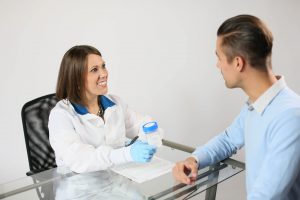

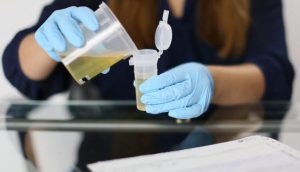
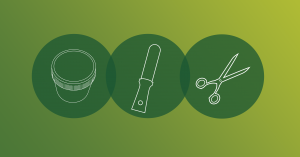
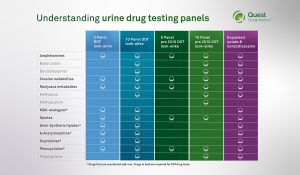
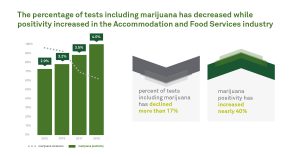
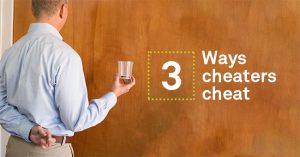

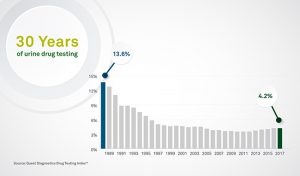
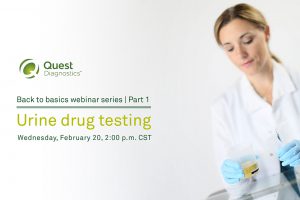
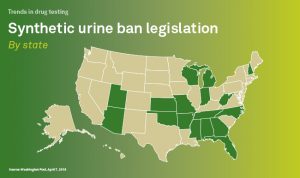
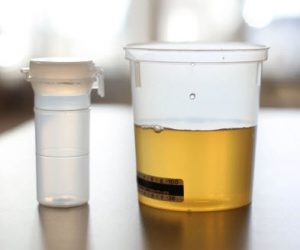
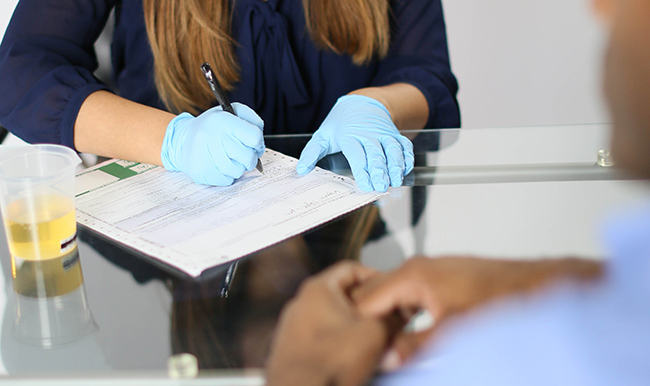
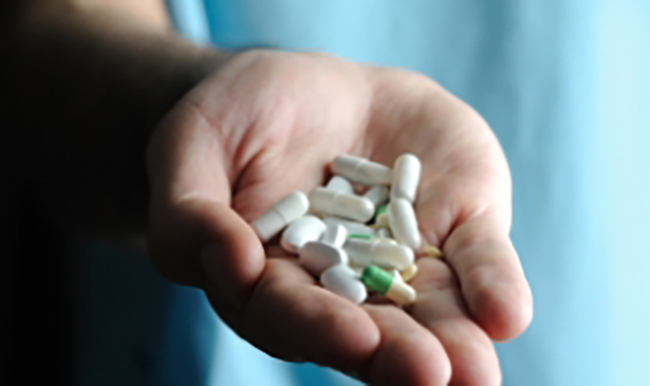
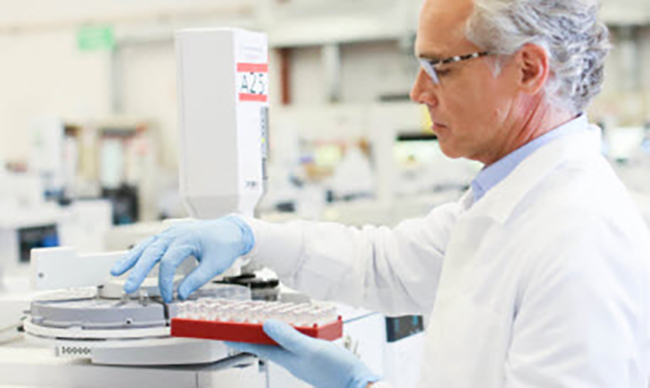




At Quest Diagnostics, we take the issue of subversion of the drug testing process very seriously. We continue to be pioneers in specimen validity testing (SVT) – a screening to help ensure the integrity of the urine specimen and drug test. We first patented our screening technology for oxidizing adulterants in 2000 and testified before Congress in 2005 on “Products that Claim to Prevent Detection of Certain Substances by Drug Testing Programs.” Today, we remain one of the few SAMHSA-certified laboratories capable of performing oxidizing adulterant identification.
One method by which donors attempt to undermine the integrity of the drug testing process is by substituting their urine with synthetic urine. Synthetic urine is essentially water that has been fortified with various constituents such as creatinine, salts, and yellow coloring in an effort to make a specimen appear to be normal human urine and pass standard tests of specimen validity. Over time, additional chemical tests of specimen validity have been proposed and, in limited cases, used by drug testing laboratories. However, manufacturers of synthetic urine have responded by adding these additional constituents to their products in an effort to defeat these additional SVT tests.
Can synthetic urine be detected in a drug test?
Yes, Quest can detect some synthetic urine using specimen validity testing, a screening that determines if a specimen is human urine. All urine drug test specimens coming into Quest Diagnostics facilities include specimen validity testing as part of the drug testing process.
Key considerations:
Watch an on-demand webinar for employers: Back to basics – Urine drug testing webinar.
Consider all drug testing specimen types
Potential subversion of the urine drug testing process is one reason that alternative specimens – hair and oral fluid – are being considered for federally-regulated drug testing programs. Urine drug testing is not directly observed; but because hair and oral fluid collections are observed, the possibility of subversion is also significantly reduced. Recent data from the Quest Diagnostics Drug Testing Index™ suggests the effectiveness of oral fluid in detecting drug use – even though it is generally acknowledged that it has a slightly shorter window of detection (depending on the drug/metabolite) – as compared to urine.
In regards to the collection of oral fluid specimens, the Proposed Federal Oral Fluid Mandatory Guidelines issued in May 2015 propose equivalent standards for oral fluid collections as urine collections (e.g., Sections 5.1, 5.2, and 8.1). While many, but not all, private sector employers “self-collect” oral fluid, this is not a uniform process and some employers prefer that oral fluid collection be separated from the hiring manager or supervisor as the proposed Federal guidelines envisage. Whether the collection is observed or not, our position is that SVT remains a critical component of the oral fluid testing process to ensure an adequate and proper collection.
Summary
In summary, technology alone cannot solve the issue of subversion of the urine drug testing process. Combining a variety of tools and tactics is the best strategy to help thwart drug test cheaters and maintain drug-free, safe, and productive workplaces. Employers should select a provider who offers multiple drug test specimen types, specimen validity testing, and collections performed by well-trained, professional collectors.
For definitions of terms related to specimen validity testing, refer to the Mandatory Guidelines for Federal Workplace Drug Testing Programs and the Medical Review Officer Manual for Federal Agency Workplace Drug Testing Programs.
Drug Testing Return on Investment (ROI) Calculator: See your potential savings by quickly generating a full graphical report tailored to your specific business.
Sign up for our monthly newsletter to get the most up-to-date drug testing information.
For more information about drug testing, visit our website or contact us online.